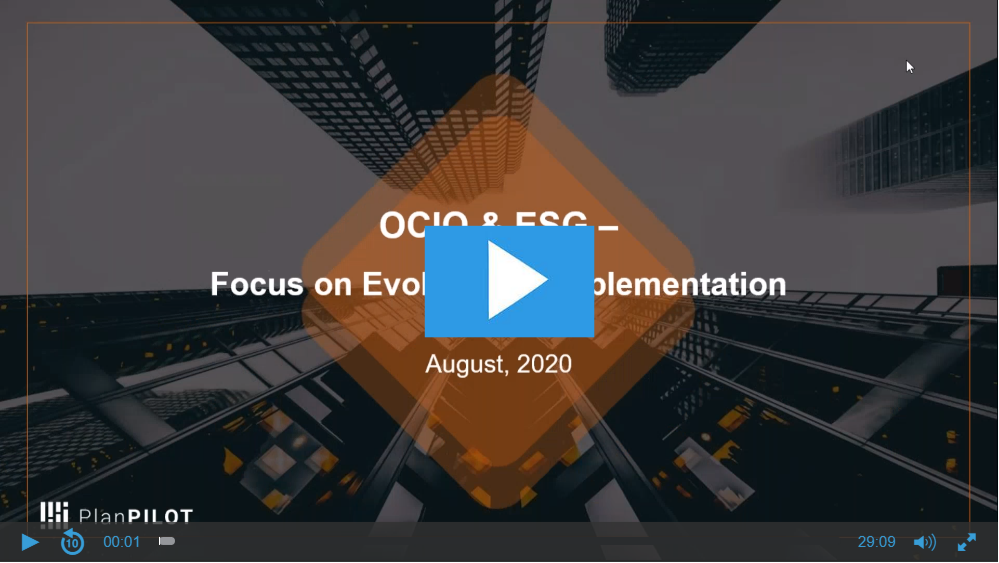By Mark Olsen, Managing Director at PlanPILOT
By the year 2030, all baby boomers in the U.S. will be over the age of 65. With that threshold looming, along with an ever-changing economic landscape, the retirement planning process is being significantly reshaped. As people retire and expect to live for another 20 to 30 years, the need for sustained income during retirement has become increasingly crucial. As a result, defined contribution (DC) plan sponsors are adapting and seeking innovative solutions, including introducing income options in their plans. Facilitated by the SECURE Act, which eases the perceived fiduciary risks of such options, plan sponsors now have a broader toolkit to better cater to the diverse needs of their participants.
In this blog, we’ll guide plan sponsors through this shifting landscape, covering key points to consider with this relatively new and increasingly popular plan structure. Our goal is to support you in shaping a retirement plan that is equipped for the complexities of the modern world and tailored to the varying needs of your participants and your company.
Historical Uses of Retirement Plans
Historically, retirement plans like 401(k)s and 403(b)s have been used to accumulate savings throughout a person’s career. These traditional plans have served as vessels for contributions, investment growth, and tax advantages, with the main goal being to build a substantial nest egg by the time of retirement.
However, these plans didn’t inherently provide a structured way to distribute these savings as a regular income in retirement, instead leaving the retirees to self-manage their funds, often leading to the risk of outliving their savings. Now, with the changing demographics in our country and workforce, the focus is shifting toward incorporating retirement income solutions that also address this decumulation phase.
Understand Plan Participant Needs
Yet with every retirement plan, it’s best to fully understand the needs of your particular participants before undergoing a change to your plan. While a common concern for many retirees is a reliable, lifetime income, other aspects like control over assets, flexibility in case of emergencies, and potential for growth also play significant roles in their decision-making. They may also be looking for features such as death benefits and inflation protection.
There are also a number of ways to “create” that income from a retirement plan. Some participants might prefer the security of a fixed annuity (which offers a guaranteed income from an insurance company), while others might prefer the potential higher returns of a managed drawdown plan. Therefore, plan sponsors need to have a deep understanding of their participants’ financial circumstances, risk tolerance, and long-term goals to select the most suitable solution.
Criteria for Retirement Income Solutions
When assessing retirement income solutions, there are several crucial factors to consider. Does the solution offer any type of guaranteed income? While it varies person to person, many retirees prefer this component as it provides the certainty of an ongoing income stream during retirement, offering peace of mind.
However, some will want the ability to capture potential market upside so they can potentially enhance their income by benefitting from positive market trends.
Another key factor is liquidity, which provides participants the flexibility to access their funds in times of emergencies or unexpected financial needs. If a retiree doesn’t have an adequate emergency fund outside of their retirement plan, then access to some of their retirement funds becomes even more pivotal.
Longevity protection is also a key consideration, ensuring participants won’t outlive their assets in an era where the average life expectancy is 79 years of age.
These are just a few of the many criteria plan sponsors and participants should consider. A comprehensive understanding of these factors, along with additional ones tailored to the unique needs of the participant base, provides the selection of an optimal retirement income solution.
Participant Education and Support Is Key
As plan sponsors navigate the complex terrain of retirement income strategies, it’s critical to remember that participant education and support form the cornerstone of successful implementation. These solutions, often intricate and nuanced, demand a certain level of understanding to fully maximize their benefits. Robust educational initiatives can aid participants in grasping the mechanics of their selected income solution, including the inherent risks, benefits, and costs, and how it fits into their broader retirement strategy.
Further, well-rounded participant education can help increase confidence in the plan, and might lower the risk of litigation. In essence, fostering an informed participant base is as critical as selecting an appropriate income solution. After all, an empowered participant is more likely to make prudent decisions that align with their retirement goals, ultimately promoting financial stability in their post-career years.
Should You Implement a Retirement Income Plan?
If you’re a plan sponsor considering the introduction of a retirement income solution, now is the time to take action. The ever-evolving landscape of retirement planning, coupled with the enhanced longevity of the modern workforce, makes it essential to at least consider income solutions that address these realities.
At PlanPILOT, we take great pride in creating a customized, streamlined retirement plan for sponsors. If you’d like to see if your company and participants could benefit from a retirement income solution, we would love to hear from you. Call us at (312) 973-4913 or email mark.olsen@PlanPILOT.com to get started today.
About Mark
Mark Olsen is the managing director at PlanPILOT, an independent retirement plan consulting firm headquartered in Chicago. PlanPILOT delivers comprehensive retirement plan advisory services to 401(k), 403(b), and 457 plan sponsors. His specialties include plan governance, investment searches, investment monitoring, and plan oversight. Mark is recognized as a leader in the industry and speaks at national conferences, including those organized by Pensions & Investments, Stable Value Investment Association, and CUPA-HR.




